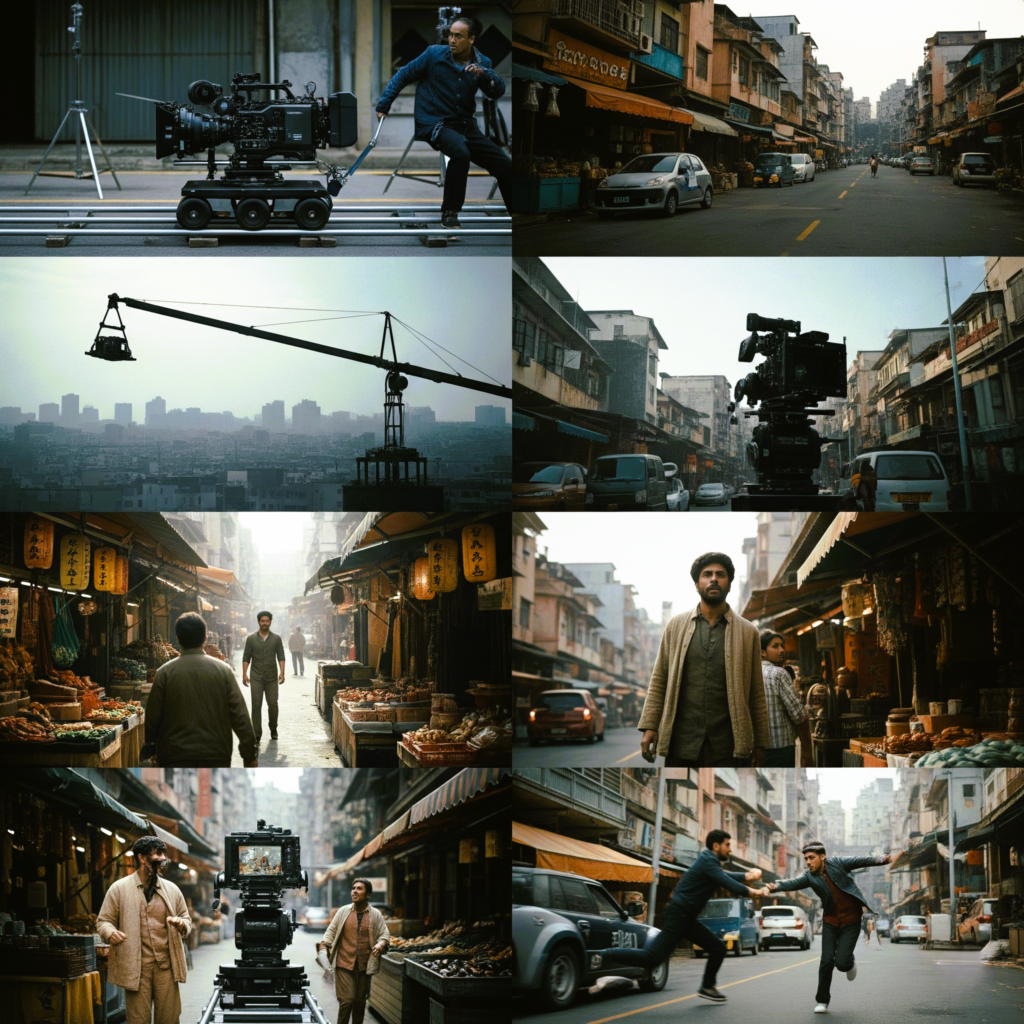
Cinematography Camera Movement: Using Motion to Bring Stories to Life:
For a cinematographer, the camera is more than simply a tool; it is a character, a witness, a dancer, or a beating heart.
One of the most potent narrative devices in visual cinematography is camera movement. It brings a scene to life, guides emotion, and enhances immersion. The camera has the ability to disclose, conceal, elevate, or crush the emotional weight of a tale with a single sweep, push, or pan.
This blog article will examine the forms, functions, methods, and emotional impact of camera movement in cinematography.
In cinematography, what is camera movement?
The term “camera movement” describes the actual motion of a camera through space while taking a picture. In contrast to editing or zooming, the camera itself is moving in this situation, conveying tone, emotion, and narrative.
A static photo depicts the actual world.
A moving camera, on the other hand, informs us how to feel.
Why Movement of the Camera Is Important?
Great camera movement may do the following:
- Create rhythm: Movement may pace a scene in a way that is startling, slow, flowing, or quick, much like music.
- Develop feelings: A gradual push-in fosters closeness. Tension is increased by a quick whip pan.
- Disclose or reveal: A dolly maneuver might leave something just out of frame or reveal secrets.
- Insist on perspective: We are drawn into a character’s world when we follow them.
- Create a cinematic visual style: Movement provides gloss and production value.
Different Camera Movement Types:
1. Pan
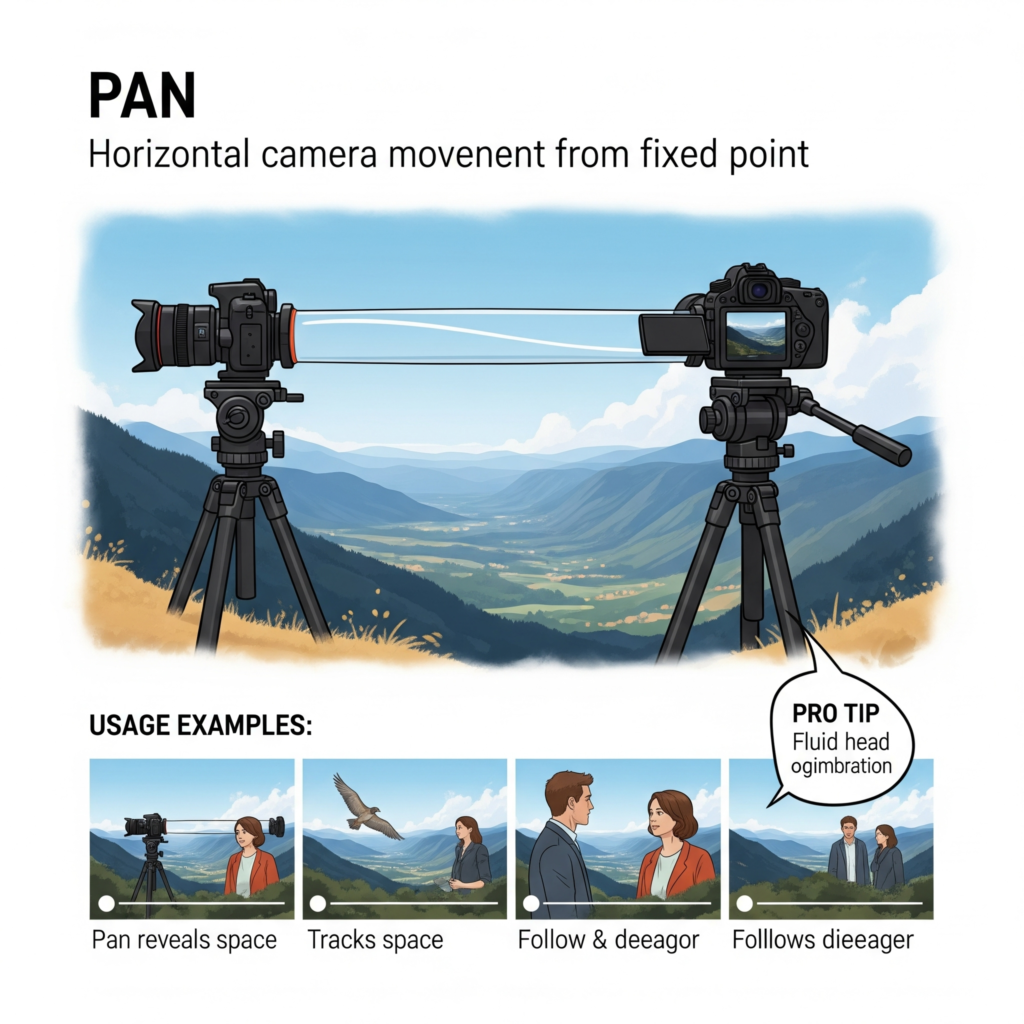
Horizontal motion from a fixed axis (from left to right or the other way around) is defined as follows.
Uses include tracking movement, revealing space, and following a discourse.
Pro Tip: Elegance is created by using fluid head tripods or gimbals with smooth pans.
Horizontal movement from a fixed axis, such as from left to right or the other way around, is defined.
Use: Tracks movement, reveals space, or keeps up with a discussion.
Pro Tip: Elegance is created by using fluid head tripods or gimbals with smooth pans.
2. Tilt
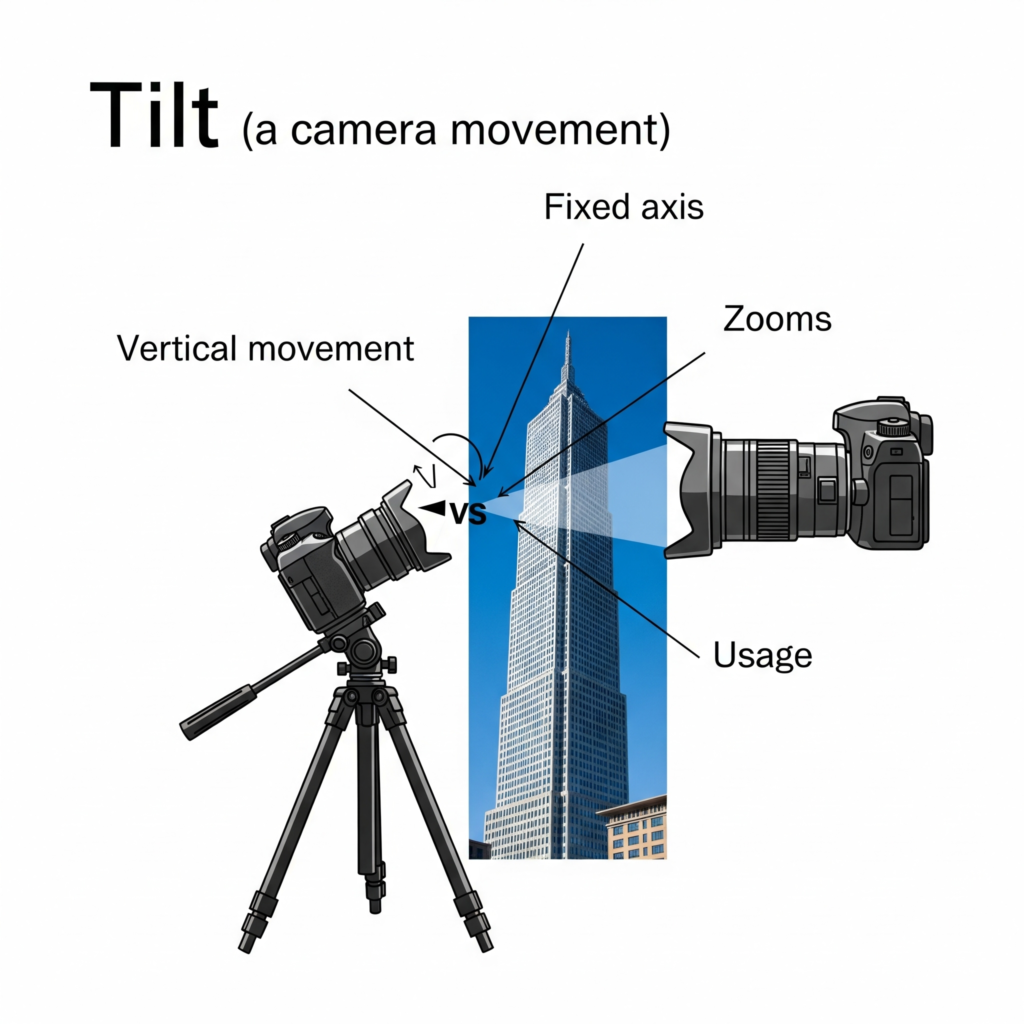
Definition: Movement vertically from a fixed axis, either up or down.
Use: Indicates size, height, or dramatic disclosures (such as panning up to a tall skyscraper).
Pro Tip: To enhance motion, combine lens changes and tilts.
3. Dolly (pull out/push in)
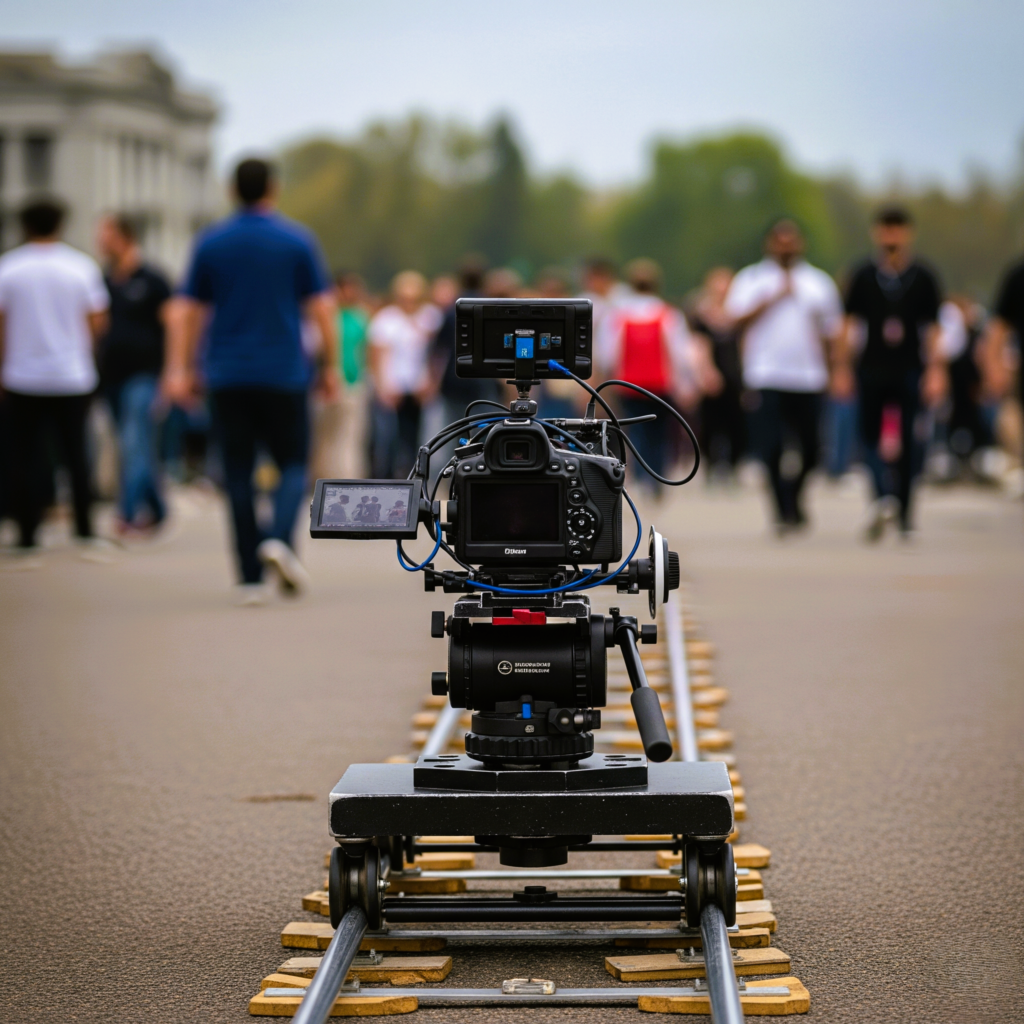
Definition: Silky forward or backward motion of the full camera.
Use: In order to intensify feelings, push in. Pull out to provide context or distance.
Emotional Power: During a conversation, a gradual push-in creates intimacy.
4. Tracking (Lateral Move/Trucking)

Definition: Shifting the camera from left to right along a path or track.
Use: Allows characters to travel around areas and tracks their footsteps.
An example of a film using immersive tracking shots is “1917” or “Children of Men.”
5. Jib/Crane
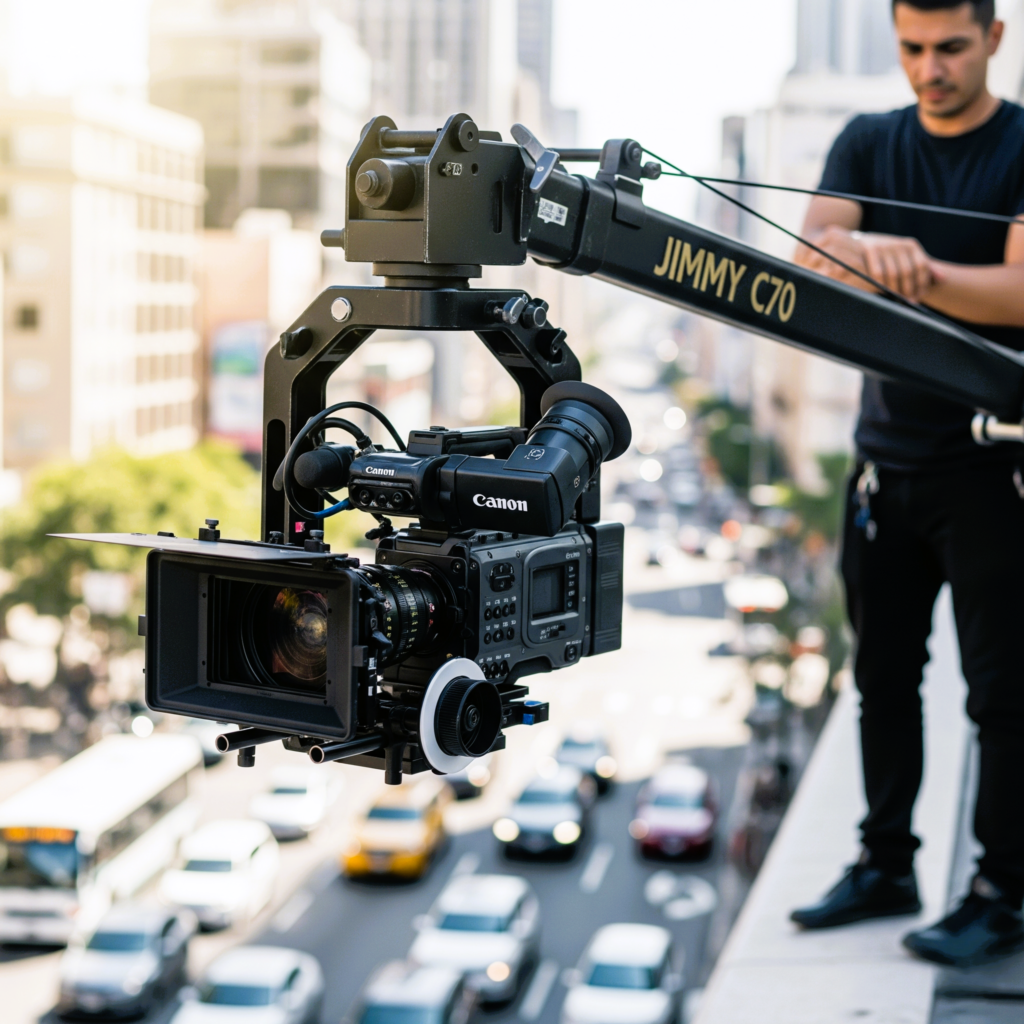
The camera is able to move vertically in space.
Use: Create epic revelations or endings, enter/exit scenarios, and demonstrate scale.
A classic example would be The Shawshank Redemption’s last crane shot.
6.Handheld
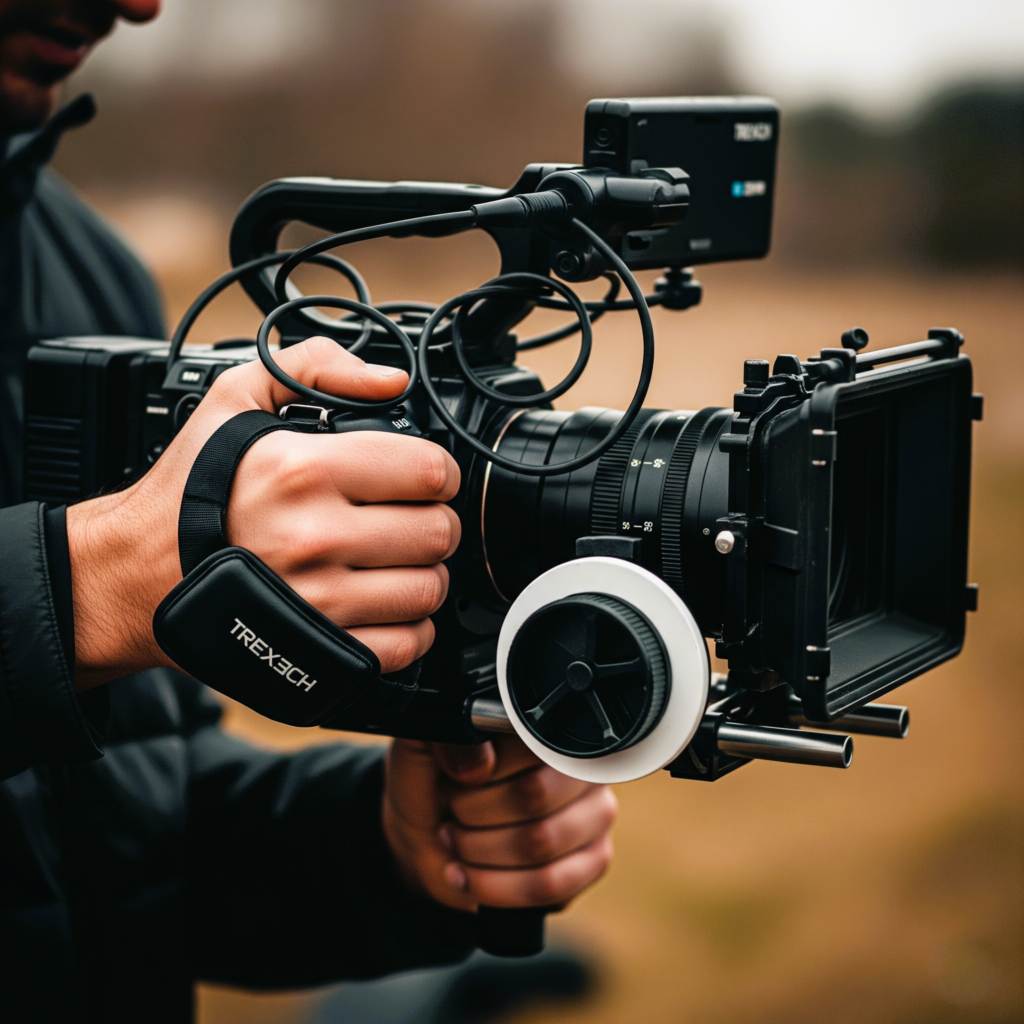
Definition: The operator holds the camera, which naturally shakes and moves.
Use: Adds rawness, intensity, and reality; ideal for action sequences or tragedies.
Emotional Power: Incorporates turmoil and urgency. Consider rescuing Private Ryan.
7. Gimbal/Steadicam
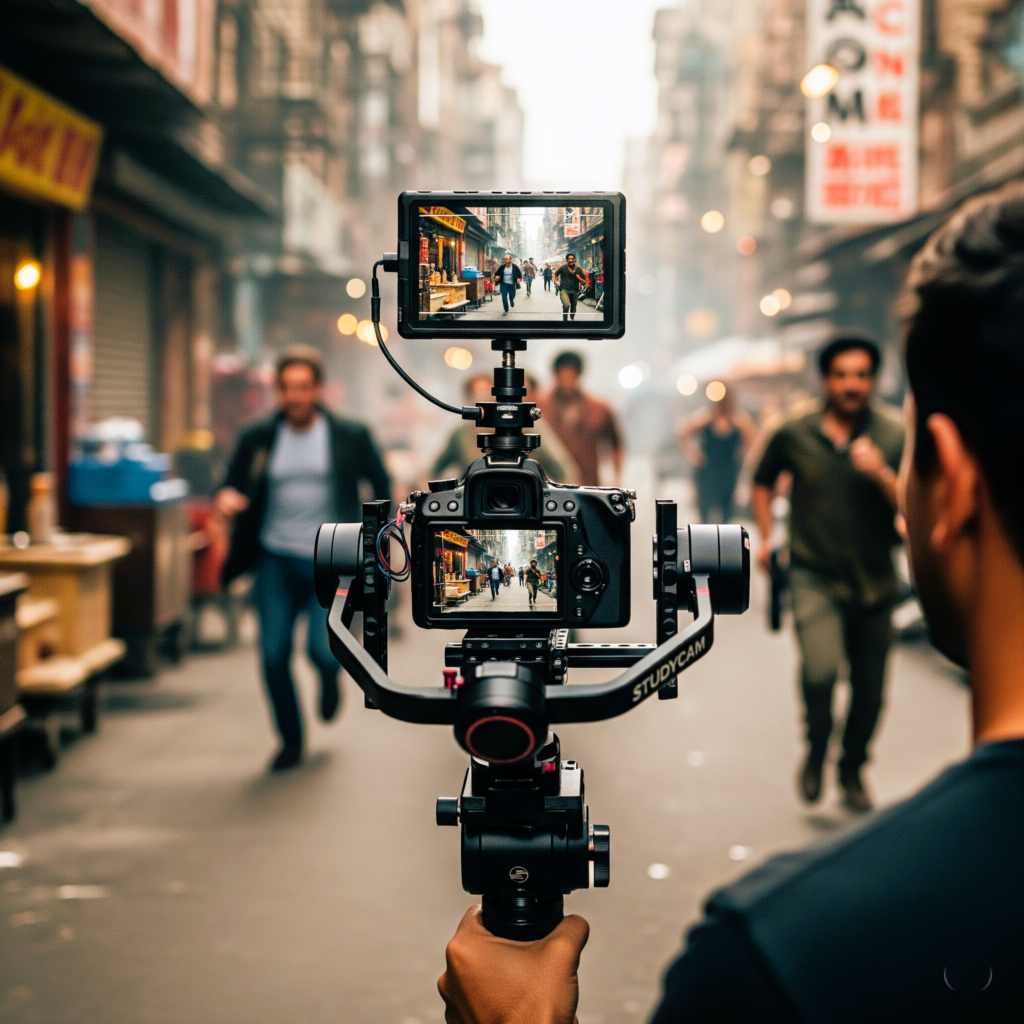
Definition: The camera moves steadily and often tracks characters.
Usage: Smooth tracking without handheld tremor, long takes.
Well-known sequence: The Steadicam sequence in The Shining’s hallway.
8. Zoom (not actually camera movement)
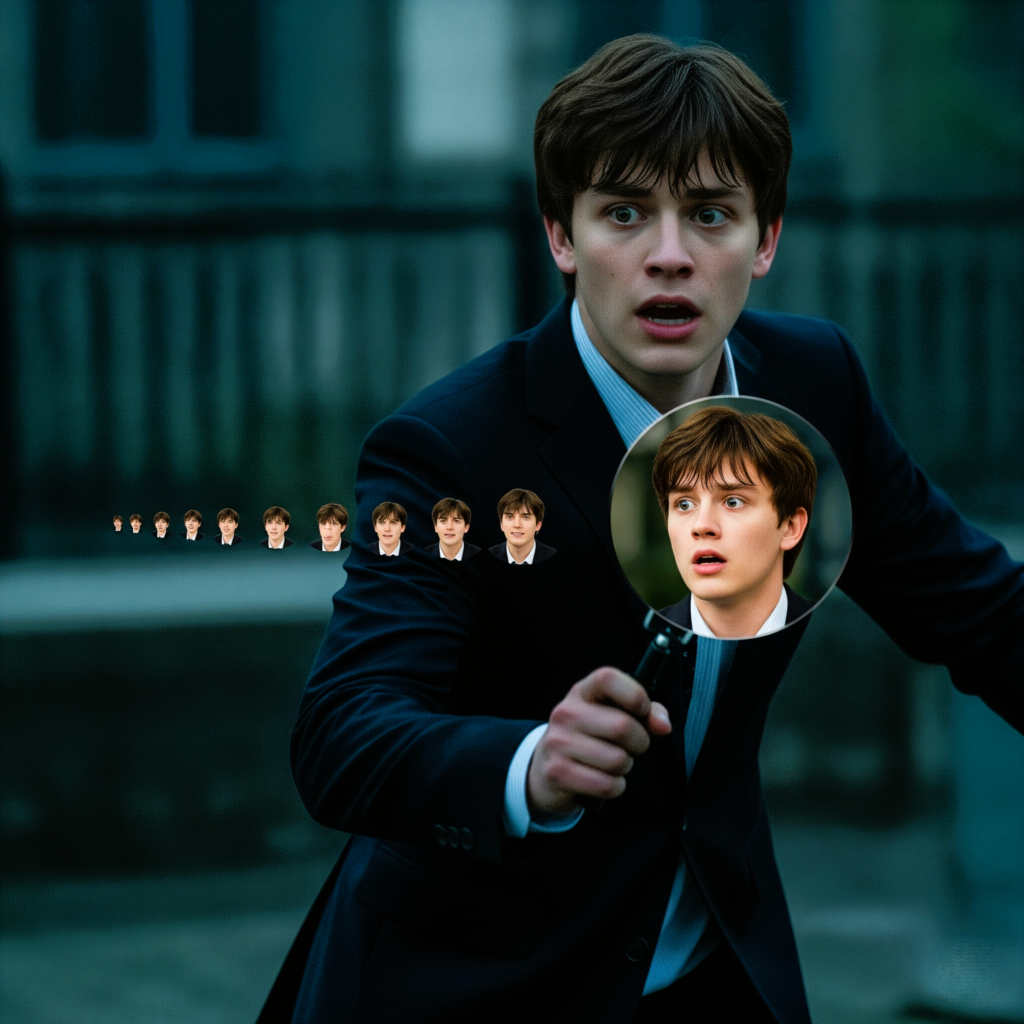
Definition: Increasing the focus length without moving the camera to enlarge the image.
Style: Applied to create a dramatic, humorous, or tense impact.
Warning: Excessive usage seems amateurish. For a cinematic effect, combine with bodily movement.
How to Choose the Right Camera Movement:
Question yourself:
- What feeling do I want to arouse?
- Does the character have feelings of empowerment, overwhelm, freedom, or imprisonment?
- Is it better to be motionless or move at this moment?
Sometimes staying still is the best course of action. If driven by the narrative, a still image may have greater impact than a moving one.
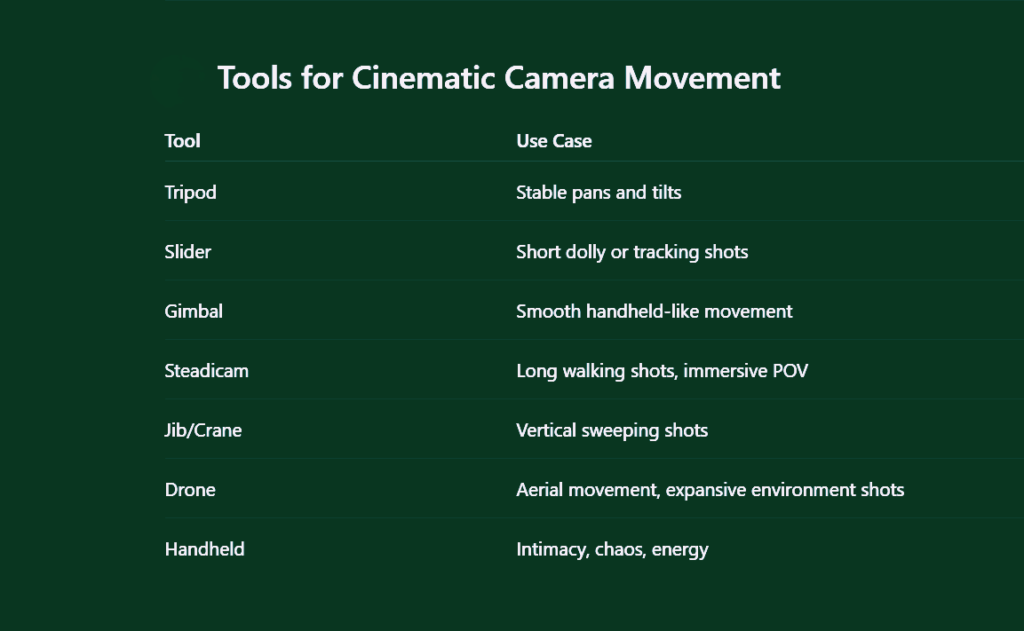
Prominent Illustrations of Iconic Camera Motion:
- In the 1990 film Goodfellas, Henry and Karen are followed inside the club by the Copacabana one-shot.
Emotion: Power, fluidity, and seduction. - 1917 (2019): The whole movie is shown in a single, continuous tracking shot. Emotion: tension, immersion, and urgency.
- In the 1980 film The Shining, a Steadicam moves through terrifying hotel hallways. A feeling of mystery, dread, and quiet.
- Snorricam shots in Requiem for a Dream (2000) fix the camera on the faces of the protagonists. Emotion: Loss of control, addiction, and confusion.
My Practical Tips as a Cinematographer:
- Encourage each and every action. You shouldn’t move the camera only because you can.
- With your actors, practice your motions. Think of it as a dance.
- Make use of your innate motivation. Change with conversation, follow a character, and expose a window.
- Set up the equipment appropriately. Recognize when a handheld camera is sufficient and when a gimbal or dolly is required.
- Don’t stop practicing. Record brief sequences using a single movement type.
In summary, movement is meaning.
Motion is emotion in movies.
The heartbeat of the tale should be served by every camera movement.
The camera must be active and purposeful at all times, whether it is gliding, floating, sprinting, or trembling.
Ask yourself, “What does my camera feel right now?” the next time you’re on set.
You’re doing more than just taking pictures if you can respond to that question.
You’re controlling feelings.
Visual Storyteller and Director of Photography Vimall S. Mishra
Comments (2)
WAJID JAMIL
says June 06, 2025 at 8:58 amNice experience with you we will work together
vimal.s.mishra@gmail.com
says June 10, 2025 at 2:18 amThank you for your kind words! I am thrilled to hear about your positive experience, and I am equally excited to work together.